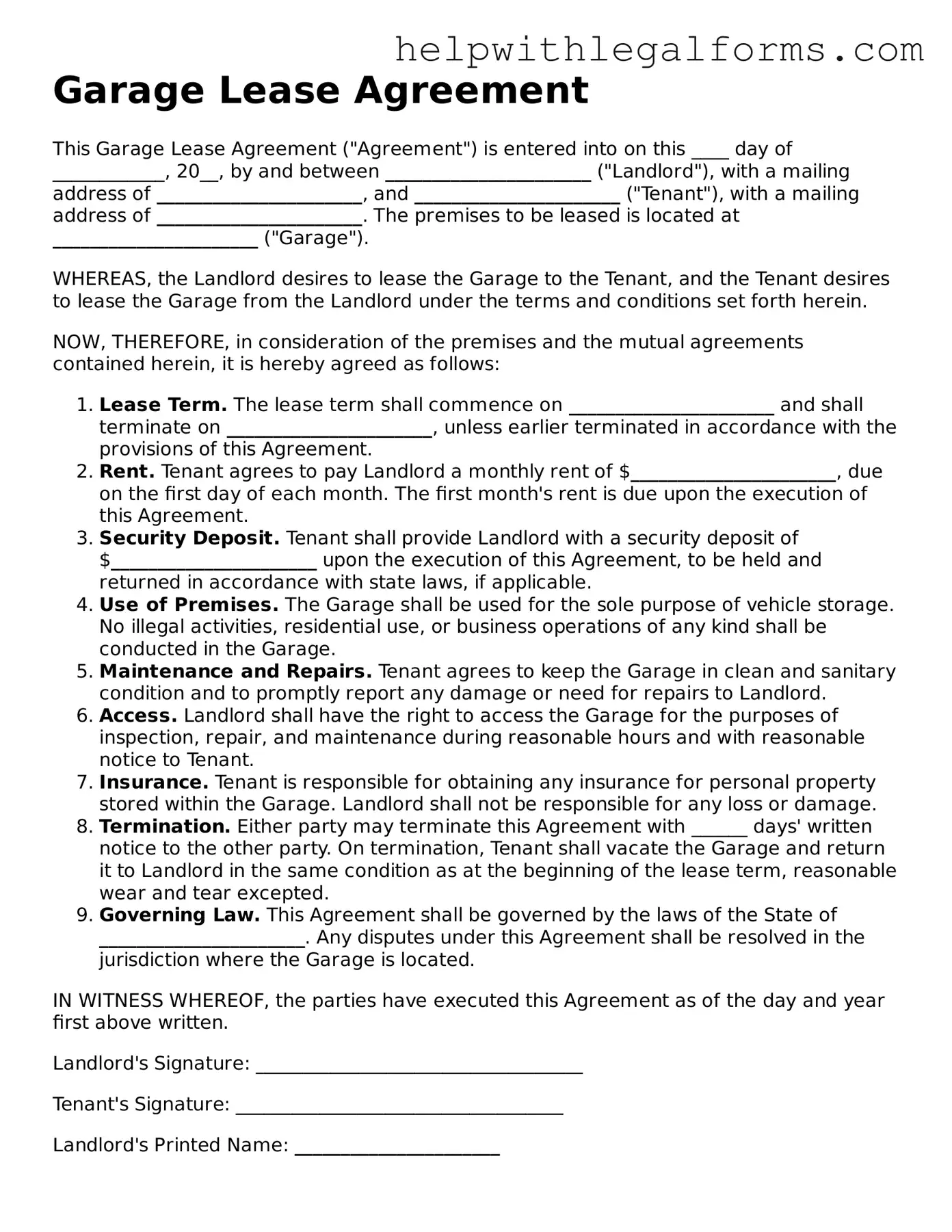Garage Lease Agreement
This Garage Lease Agreement ("Agreement") is entered into on this ____ day of ____________, 20__, by and between ______________________ ("Landlord"), with a mailing address of ______________________, and ______________________ ("Tenant"), with a mailing address of ______________________. The premises to be leased is located at ______________________ ("Garage").
WHEREAS, the Landlord desires to lease the Garage to the Tenant, and the Tenant desires to lease the Garage from the Landlord under the terms and conditions set forth herein.
NOW, THEREFORE, in consideration of the premises and the mutual agreements contained herein, it is hereby agreed as follows:
- Lease Term. The lease term shall commence on ______________________ and shall terminate on ______________________, unless earlier terminated in accordance with the provisions of this Agreement.
- Rent. Tenant agrees to pay Landlord a monthly rent of $______________________, due on the first day of each month. The first month's rent is due upon the execution of this Agreement.
- Security Deposit. Tenant shall provide Landlord with a security deposit of $______________________ upon the execution of this Agreement, to be held and returned in accordance with state laws, if applicable.
- Use of Premises. The Garage shall be used for the sole purpose of vehicle storage. No illegal activities, residential use, or business operations of any kind shall be conducted in the Garage.
- Maintenance and Repairs. Tenant agrees to keep the Garage in clean and sanitary condition and to promptly report any damage or need for repairs to Landlord.
- Access. Landlord shall have the right to access the Garage for the purposes of inspection, repair, and maintenance during reasonable hours and with reasonable notice to Tenant.
- Insurance. Tenant is responsible for obtaining any insurance for personal property stored within the Garage. Landlord shall not be responsible for any loss or damage.
- Termination. Either party may terminate this Agreement with ______ days' written notice to the other party. On termination, Tenant shall vacate the Garage and return it to Landlord in the same condition as at the beginning of the lease term, reasonable wear and tear excepted.
- Governing Law. This Agreement shall be governed by the laws of the State of ______________________. Any disputes under this Agreement shall be resolved in the jurisdiction where the Garage is located.
IN WITNESS WHEREOF, the parties have executed this Agreement as of the day and year first above written.
Landlord's Signature: ___________________________________
Tenant's Signature: ___________________________________
Landlord's Printed Name: ______________________
Tenant's Printed Name: ______________________
Date: ______________________
